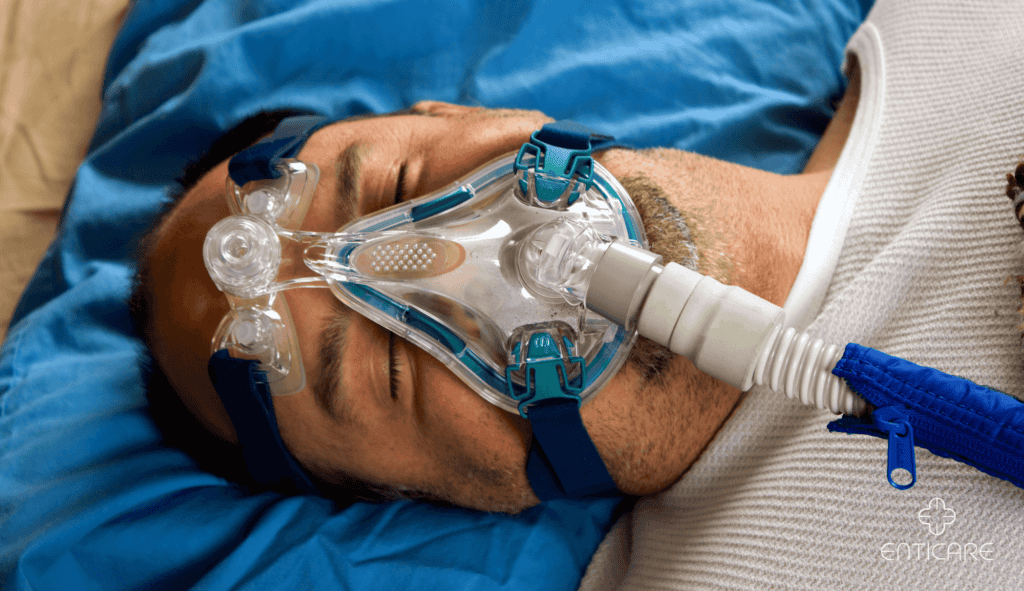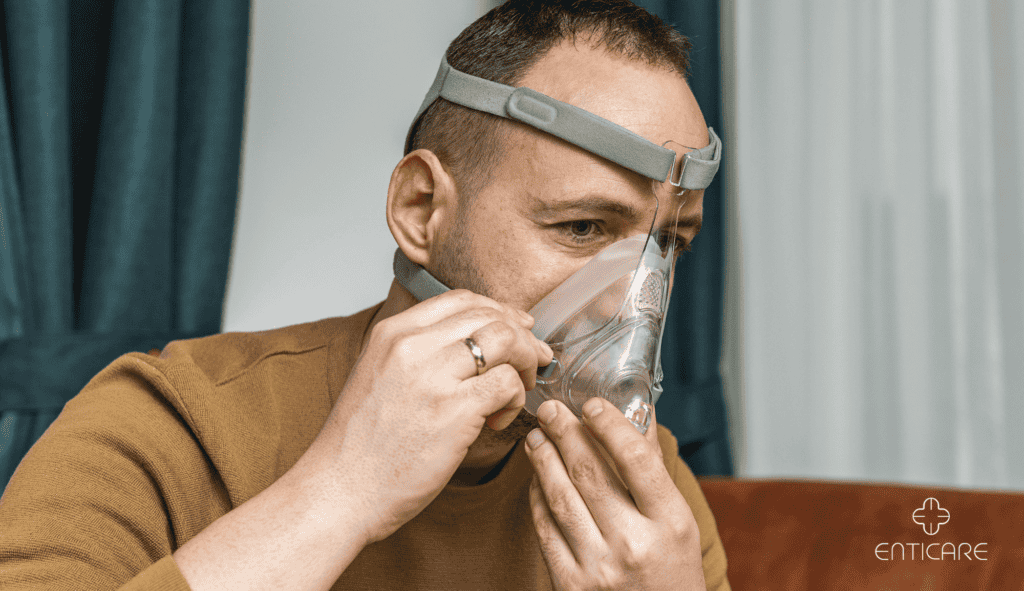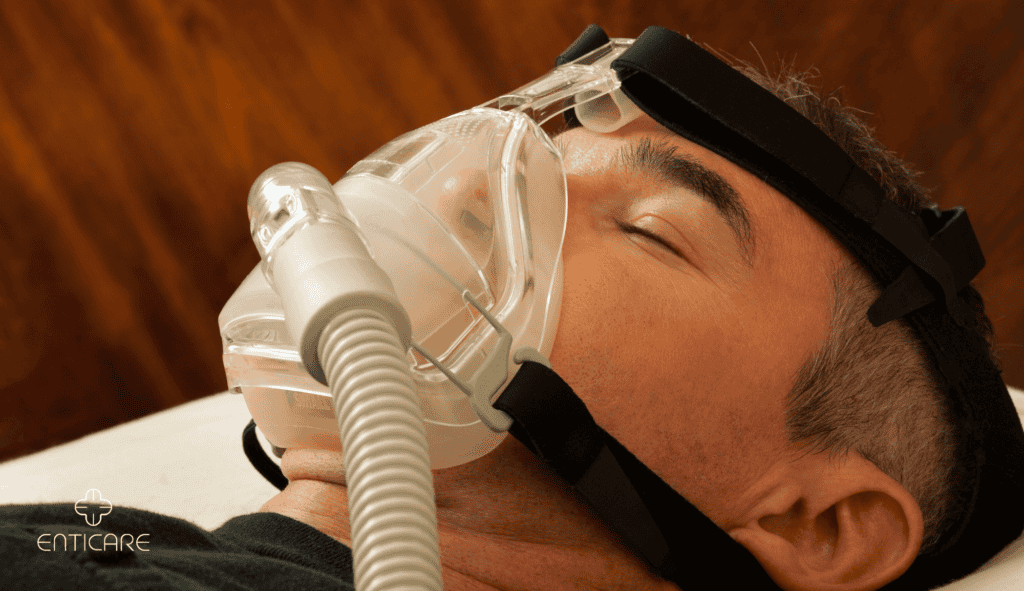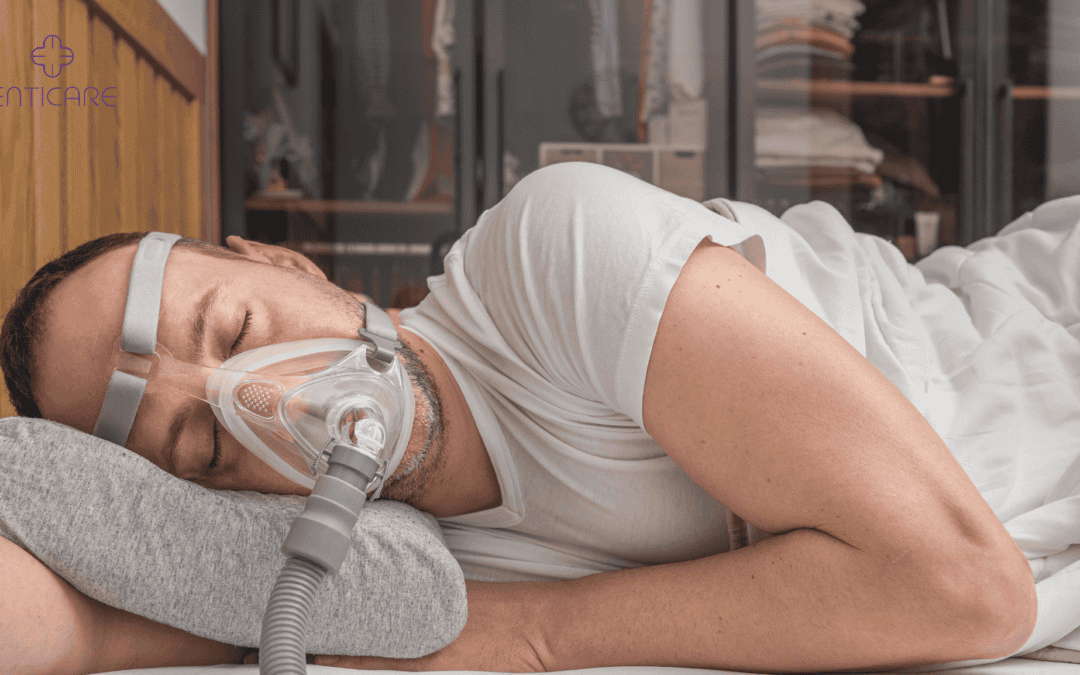Living with sleep apnea or other respiratory issues can be challenging, but modern medical technology offers effective solutions. One such solution is the BiPAP machine, a powerful tool that helps individuals breathe more easily and sleep better. BiPAP delivers air at two different pressure levels—higher during inhalation and lower during exhalation—to assist with breathing. If you’re curious about what a BiPAP machine is, how it works, and how it might benefit you, this comprehensive guide will provide all the information you need. BiPAP therapy can improve oxygenation for patients with respiratory issues, enhancing their overall respiratory function and stability.
By the end of this blog, you’ll have a solid understanding of BiPAP machines and whether they could be the right choice for your sleep and respiratory health. Let’s dive in!

What Is a BiPAP (Bilevel Positive Airway Pressure) Machine?
BiPAP stands for Bilevel Positive Airway Pressure, a type of noninvasive ventilation therapy that provides ventilation support to assist patients with breathing. The pressure setting for inhalation (IPAP) is higher than that for exhalation (EPAP), which differentiates BiPAP from CPAP machines that maintain a constant air pressure.
BiPAP machines affect breathing by providing different pressure levels during inhalation and exhalation, making it easier for individuals with sleep-related breathing issues to breathe comfortably.
How Does a BiPAP Machine Work?
A BiPAP machine delivers two levels of air pressure to the patient: a higher pressure when inhaling (IPAP) and a lower pressure when exhaling (expiratory positive airway pressure). BiPAP machines use positive pressure to keep the airways open. This dual-pressure system, known for its pressure control, helps keep the airways open during sleep, making it easier for patients to breathe.
How to Use a BiPAP Machine Effectively
Using a BiPAP machine correctly is crucial for achieving the best results and ensuring your comfort. One of the significant advantages of using a BiPAP machine is the enhanced patient comfort it provides, allowing for better speech and swallowing while minimizing trauma to the trachea and larynx.
Additionally, ensuring a proper fit for the mask is essential to prevent mask leaks, which can reduce the effectiveness of the air pressure delivery system. Some machines have features to alert users when a mask leak occurs, allowing for timely adjustments to optimize performance.
Proper Fit and Mask Selection
A well-fitting mask is essential for BiPAP therapy to work effectively. An improper fit can lead to a mask leak, reducing the effectiveness of the therapy. Masks come in various styles, including full-face masks, nasal masks, and nasal pillows. Your healthcare provider will help you choose the right mask based on your breathing patterns and comfort preferences.
Setting Up Your BiPAP Machine
Setting up your BiPAP machine involves connecting the mask to the machine, adjusting the straps for a snug fit, and selecting the appropriate pressure settings, including pressure adjustment. Understanding the machine features is crucial for optimizing its effectiveness. The machine uses pressurized air to deliver the necessary support for breathing by adjusting the pressure settings for inhalation (IPAP) and exhalation (EPAP). Most machines come with an instruction manual, and your provider will guide you through the process.
Maintenance and Cleaning
Regular maintenance and cleaning are vital to prevent infections and ensure your BiPAP machine functions properly. Clean the mask, tubing, and humidifier chamber daily with warm water and mild soap. Replace the filters as recommended by the manufacturer.

Benefits of Using a BiPAP Machine
BiPAP machines offer several benefits, such as improving the quality of life for patients with breathing difficulties. BiPAP therapy can improve oxygenation by enhancing respiratory function in patients with conditions like congestive heart failure and acute respiratory distress syndrome.
These machines also facilitate breathing by reducing the workload on the respiratory muscles, making it easier for patients with respiratory challenges to breathe more comfortably.
Improved Sleep Quality
By keeping the airways open and reducing sleep apnea events, BiPAP machines help you get a better night’s sleep. This improved sleep quality leads to increased energy levels and better overall health.
Enhanced Breathing Comfort
The variable pressure settings of a BiPAP machine make breathing more comfortable, especially for patients who struggle with exhaling against the pressure of a CPAP machine.
Reduced Risk of Complications
Untreated sleep apnea and respiratory disorders can lead to severe complications, including heart disease, stroke, and high blood pressure. BiPAP machines are particularly effective in managing respiratory failure, including acute respiratory failure, by improving patient outcomes and reducing the need for intubation. Using a BiPAP machine reduces these risks by ensuring consistent airflow, oxygenation, and monitoring of arterial blood gases during sleep. Additionally, noninvasive positive pressure ventilation (NPPV) plays a crucial role in reducing the need for invasive procedures, aiding in respiratory support for conditions like congestive heart failure (CHF) and COVID-19.

Potential Side Effects and How to Address Them
While BiPAP machines offer significant benefits, some patients may experience side effects. Nasal dryness can be alleviated with a humidifier, which blows warm, moist air into the airway. Understanding these side effects and knowing how to address them can help you continue therapy comfortably.
BiPAP therapy also helps manage carbon dioxide levels in the blood, which is crucial for individuals with sleep-related hypoventilation or other complex sleep-related breathing disorders.
Dry Mouth and Nasal Passages
Dryness in the mouth and nasal passages is a common side effect of using a BiPAP machine. Using a humidifier attached to your BiPAP machine can alleviate this issue by adding moisture to the air you breathe.
Skin Irritation from the Mask
Wearing a mask all night can sometimes cause skin irritation or pressure sores. To prevent this, ensure your mask fits correctly without being too tight, and use mask liners or cushions to protect your skin.
Bloating and Discomfort
Some patients experience bloating or discomfort due to swallowing air during BiPAP therapy, a condition known as aerophagia. Unlike mechanical ventilation, which can be invasive, BiPAP uses a mask to assist patients who can breathe independently but need additional help with oxygenation and carbon dioxide removal. Monitoring arterial blood gases can help adjust the settings to reduce discomfort and improve therapy effectiveness. BiPAP is less invasive compared to invasive mechanical ventilation, which involves a tube inserted into the throat. Adjusting the pressure settings or using a ramp feature that gradually increases pressure can also help reduce this side effect.
When to Seek Immediate Help
If you experience severe shortness of breath, chest pain, or other concerning symptoms while using your BiPAP machine, seek medical attention immediately. These could be signs of a serious complication that requires prompt treatment.
Take Control of Your Sleep and Respiratory Health
A BiPAP machine can be a game-changer for individuals struggling with sleep apnea or other respiratory issues. It is crucial to consult with health care providers to ensure the effectiveness of the treatment. By understanding how BiPAP machines work, how to use them effectively, and how to manage any potential side effects, you can take control of your sleep and respiratory health. A sleep study is essential in determining the appropriate pressure settings for your BiPAP machine, which can significantly enhance your sleep quality and overall health outcomes.
If you think a BiPAP machine might be right for you, don’t hesitate to schedule an appointment with a sleep specialist. Click here to book a consultation and start your journey toward better sleep and improved health.

